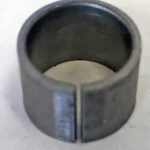Thinking about using Steel for your Stamped Parts?
Let’s talk about Steel
 STEEL. Steel is an alloy of iron and other elements, primarily carbon, which leads us to our first three main categories of steel. High Carbon Steel, Medium Carbon, and Low Carbon Steel. What’s the difference? Well, I’m glad you asked! Increasing carbon content increases hardness and strength and improves hardenability. But carbon also increases the brittleness and reduces weldability because of its tendency to form martensite. This means carbon content can be both a blessing and a curse when it comes to commercial steel.
STEEL. Steel is an alloy of iron and other elements, primarily carbon, which leads us to our first three main categories of steel. High Carbon Steel, Medium Carbon, and Low Carbon Steel. What’s the difference? Well, I’m glad you asked! Increasing carbon content increases hardness and strength and improves hardenability. But carbon also increases the brittleness and reduces weldability because of its tendency to form martensite. This means carbon content can be both a blessing and a curse when it comes to commercial steel.
High carbon steel
High carbon steels are those with carbon contents between 0.60% and 1.4% of the overall weight. The alloys in this particular category constitute the strongest and hardest within the three groups, but they are also the least ductile. These steels are used in a range of different mechanical, cutting and bearing applications as it can be hardened through heat treating and tempering.
Medium carbon steel
Medium carbon steels include grades with carbon contents ranging from 0.25% to 0.60% of the steel mass. Medium carbon grades are typically employed in conjunction with alloys such as chromium, nickel, and molybdenum to produce high strength, wear-resistance and toughness. Products using medium grades of carbon steel include gears, axles, studs and other machine components that require optimal combinations of strength and toughness.
Medium carbon steels have good machining characteristics, and one of the more popular grades used in machined steel product is AISI 1045.
Low carbon steel

Low carbon steels such as 302, 304 or 316 grades of stainless are typically used in applications that require high degrees of corrosion resistance but do not require a hardened surface. The carbon content of these steels typically range between 0.03-0.08%. They machine and weld nicely and are more ductile than higher-carbon steels. Consumers typically use these grades of stainless in kitchen equipment, silverware or almost any grade of un-plated steel used in food preparation. It’s great because it can survive the dishwasher without rusting. Low Carbon steel is usually not heat-treated to make it stronger due to the very low carbon content.
Alloy Steels
Alloy steels contain alloying elements (e.g. manganese, silicon, nickel, titanium, copper, chromium, and aluminum) in varying proportions in order to manipulate the steel’s properties, such as its hardenability, corrosion resistance, strength, formability, weldability or ductility.
Applications for alloys steel include pipelines, auto parts, transformers, power generators, and electric motors.
Stainless Steels
Stainless steels generally contain between 10-20% chromium as the main alloying element and are valued for high corrosion resistance. With over 11% chromium, steel is about 200 times more resistant to corrosion than mild steel. These steels can be divided into three groups based on their crystalline structure:
- Austenitic: Austenitic steels are non-magnetic and non heat-treatable, and generally contain 18% chromium, 8% nickel and less than 0.8% carbon. Austenitic steels form the largest portion of the global stainless steel market and are often used in food processing equipment, kitchen utensils, and piping.
- Ferritic: Ferritic steels contain trace amounts of nickel, 12-17% chromium, less than 0.1% carbon, along with other alloying elements, such as molybdenum, aluminum or titanium. These magnetic steels cannot be hardened by heat treatment but can be strengthened by cold working.
- Martensitic: Martensitic steels contain 11-17% chromium, less than 0.4% nickel, and up to 1.2% carbon. These magnetic and heat-treatable steels are used in knives, cutting tools, as well as dental and surgical equipment.
Tool Steels
Tool steels contain tungsten, molybdenum, cobalt, and vanadium in varying quantities to increase heat resistance and durability, making them ideal for cutting and drilling equipment.
Sources
South Africa Stainless Steel Development Association. Types.
URL: www.sassda.co.za
International Stainless Steel Forum (ISSF). The Ferritic Solution.
URL: www.worldstainless.org
The Metal Supermarket
URL: www.metalsupermarkets.com
The Balance
URL: www.thebalance.com

